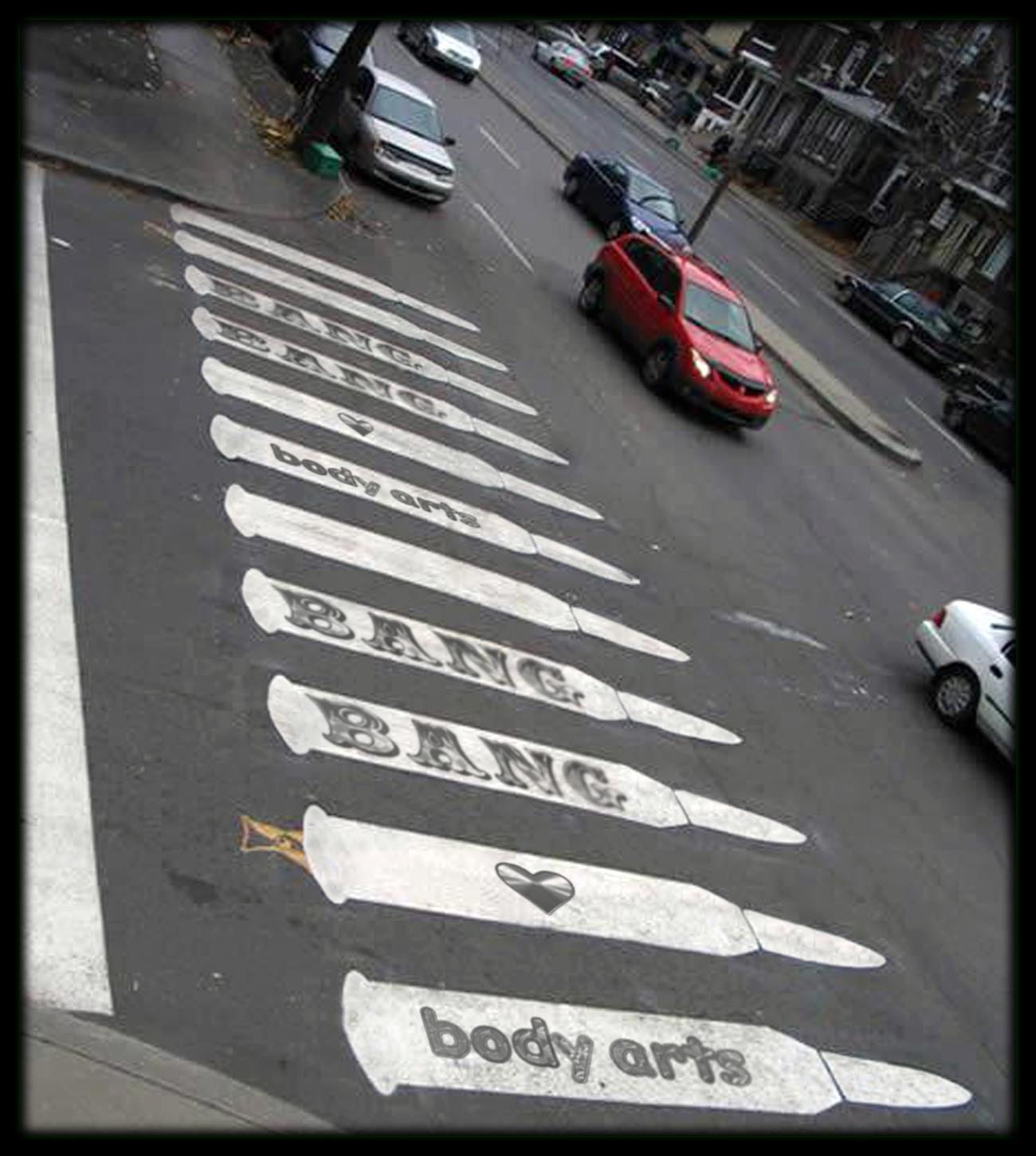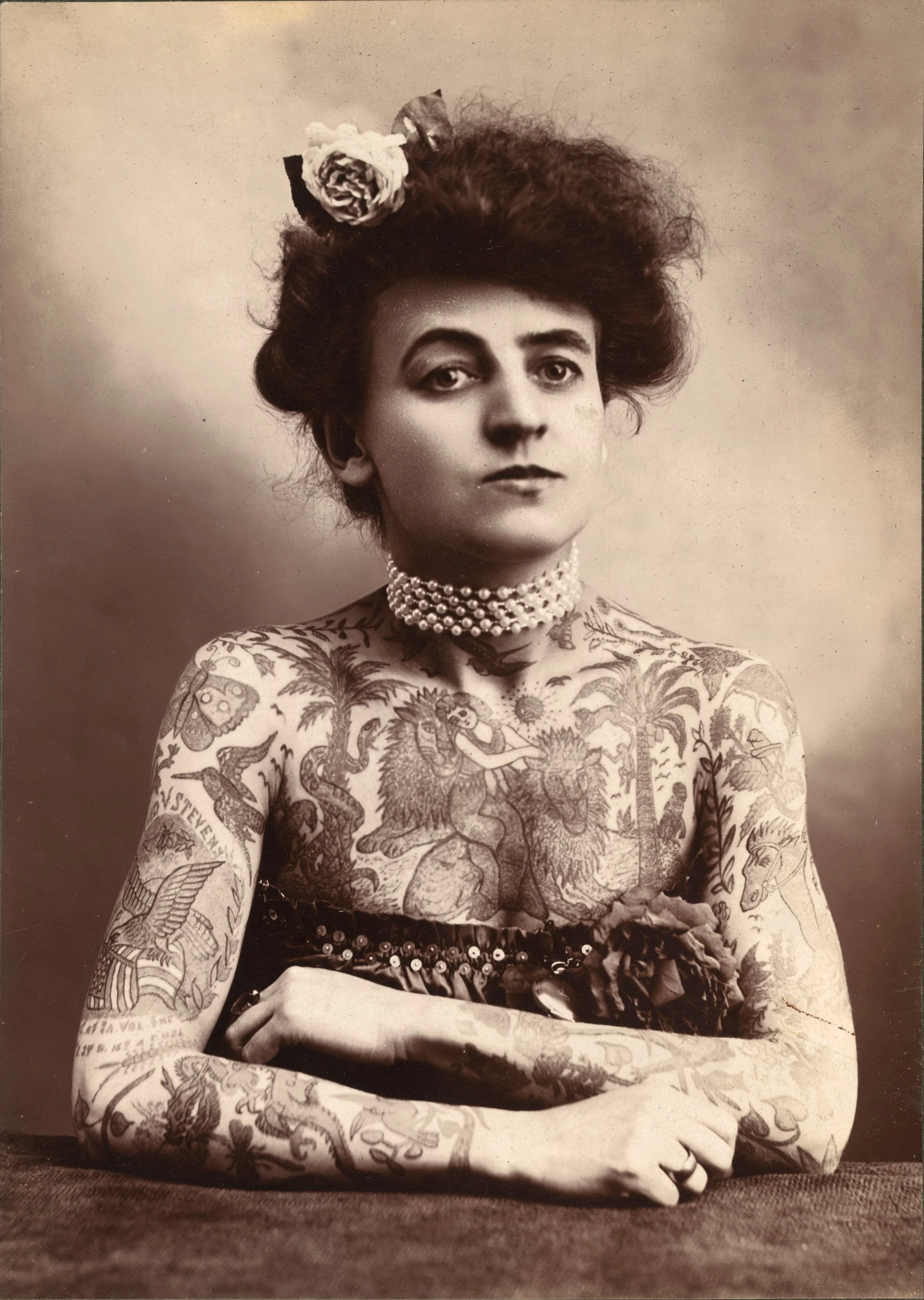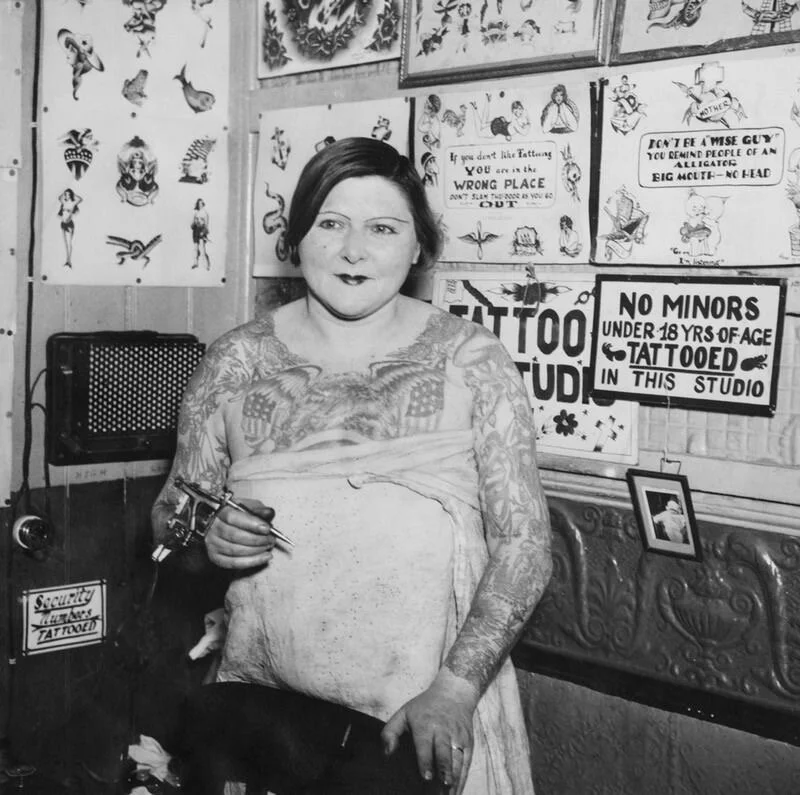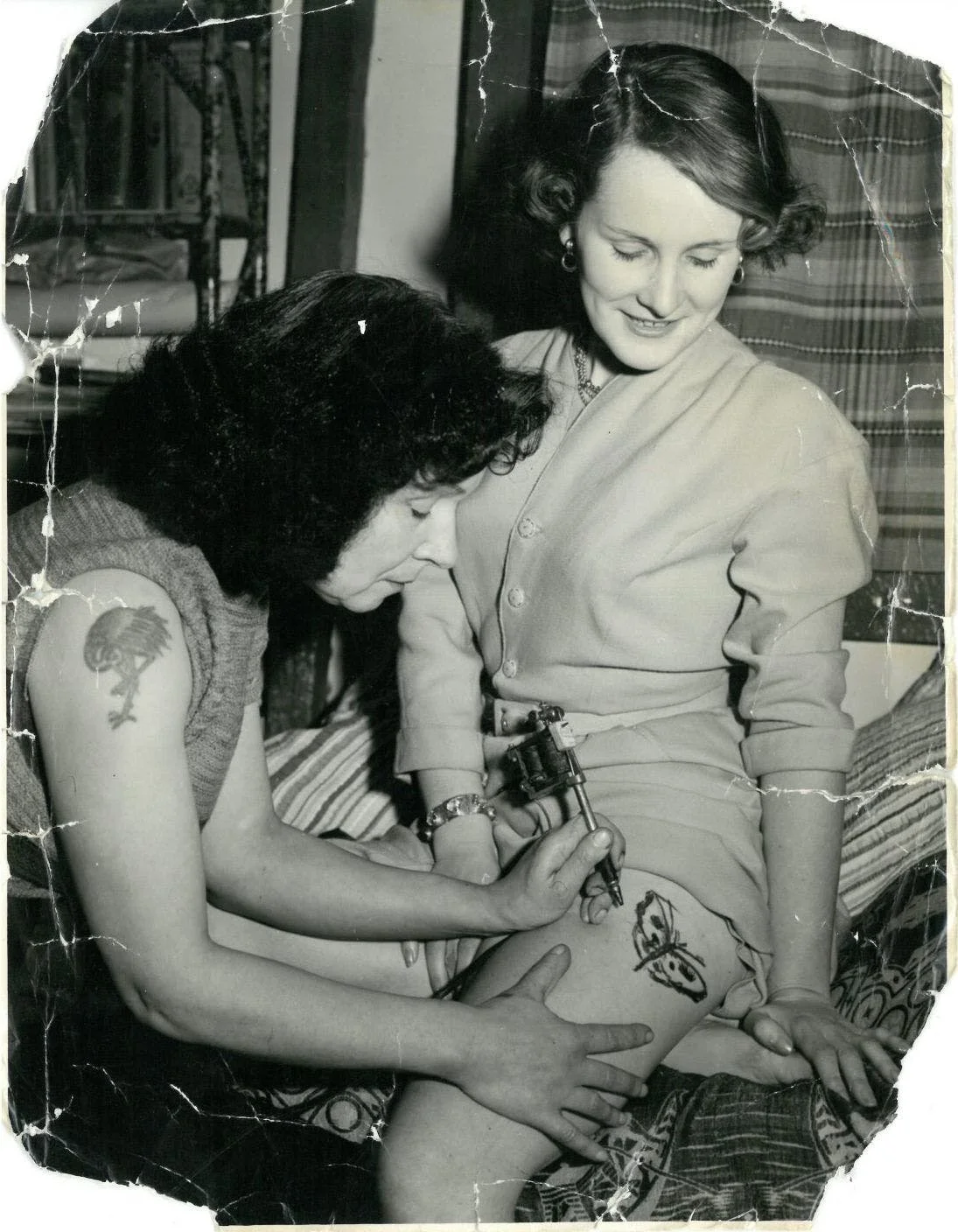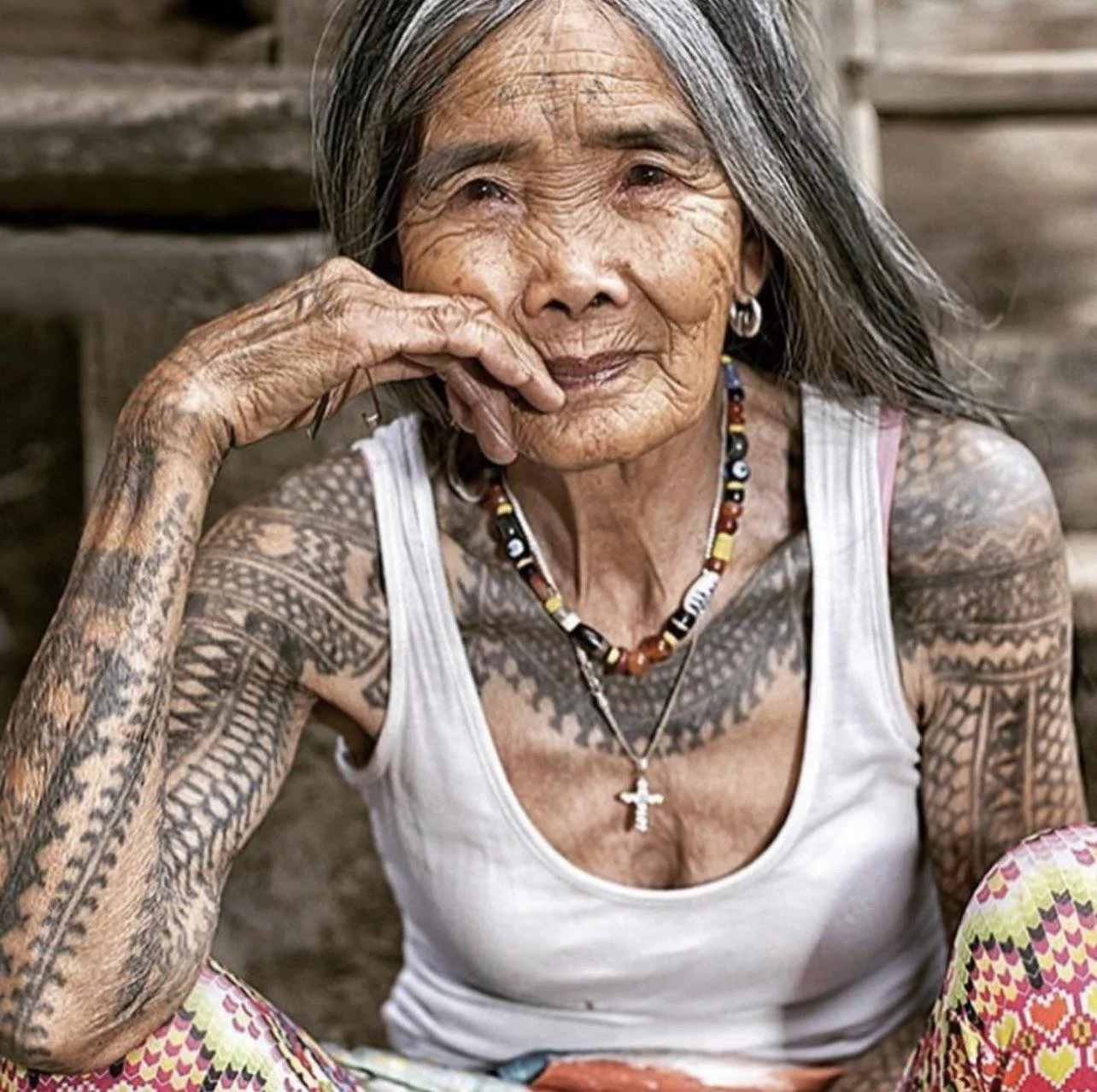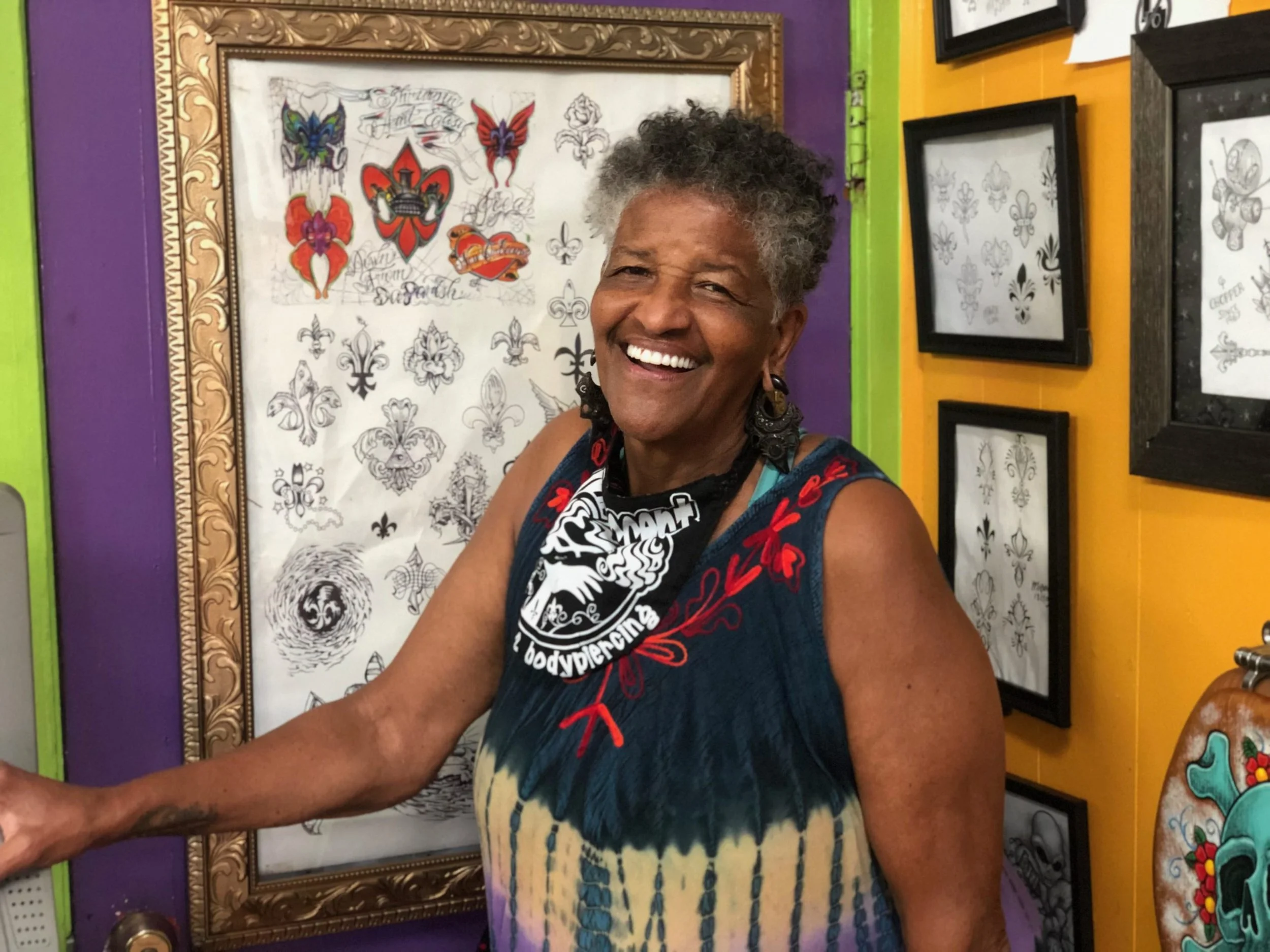Tattooing is steeped in tradition and has an incredibly rich and diverse history. Throughout this history, there were some women who challenged the status quo, paving the way for the women – tattooers and collectors alike – of today who are in love with this magical, empowering art form. These ladies began their journeys in the early 1900s, when women didn’t have many rights at all – both politically and at home, where they were expected to be dutiful wives, mothers and homemakers. In honor of the early female tattoo artists who chose for themselves, and refused to be dictated to by society, we salute these women who contributed to the art form of tattooing.
Maud Wagner
Maud Wagner
Known as America’s first female tattoo artist, Maud Wagner was born February 12, 1877 in Kansas. By the early 1900’s, Maud started working in a traveling circus as an acrobat, aerialist and contortionist, which would eventually lead her to St. Louis World Fair. In 1904, she would meet her future husband, Gus Wagner, a renowned tattoo artist who was the last to work only by hand using the stick and poke method. She enjoyed the artist's body art enough to agree to a date with him in exchange for tattooing lessons before the two fell in love.After leaving the circus, Maud and Gus Wagner traveled around the United States, working both as tattoo artists and "tattooed attractions" in vaudeville houses, county fairs and amusement arcades. They are credited with bringing tattoo artistry inland, away from the coastal cities and towns where the practice had started. Maud proved to be the first woman to never use an electric tattoo machine and master the hand-poked tattoo method that she used exclusively until she died in 1961. Her legacy lived on through her daughter Lovetta, who learned the art of tattooing at a young age from her parents and went on to become a successful tattoo artist herself.
2. Millie Hull
Millie Hull
Mildred Hull - affectionately known as Millie - was New York City’s first female tattooer. Born in 1897, Millie dropped out of school at the age of 13 to join the circus, and eventually found work as a burlesque dancer. Upon discovering that she could earn a greater living in the circus as a tattooed lady, Millie sought out legendary Bowery tattooer Charlie Wagner, who covered Millie’s entire body in tattoos in a matter of weeks. Inspired by her experience with Charlie Wagner, Millie went on to learn to tattoo under Wagner himself, opening her own shop called Tattoo Emporium on the Bowery in the late 1930s. Millie’s shop swiftly grew into one of the most prominent tattoo spots on the Bowery during the early 20th century. Unlike many other female tattooers of her time, Millie’s skills were mainly honed on her own accord, and not passed to her through a boyfriend or husband.
3. Jessie Knight
Jessie Knight tattooing a client
Born in 1904, Jessie Knight was the first and only female tattooist to work professionally in Britain for over 40 years. Her longtime love affair with tattooing was inherited from her father, who had traveled extensively as a sailor and worked as both a circus performer and a tattoo artist. Jessie spent most of her childhood traveling with her father as he performed daredevil acts and tattooed clients and performers. When Jessie was only 18, her father entrusted her to run the family tattoo shop in his absence, as he would be returning to sea. Jessie took over her father’s business successfully, consistently surprising clients with how young she was and the fact that she was a woman. At the point in time when Jessie started her career as a tattoo artist, tattoos were not commonplace in Britain. Reserved usually for sailors and ‘undesirables’, they were certainly not the norm for young women. Thus when married at age 27, Jessie faced her biggest obstacle in her career, her husband. His disapproval lead to Jessie taking a hiatus from tattooing lasting roughly around 8 years. Once Knight was able to escape the marriage and leave her old life behind, she opened up her first tattoo studio in 1936. As her business grew, she marketed herself as “Jessie Knight: Expert Freehand Lady Tattoo Artist”. Her unique freehand method was achieved by drawing on the skin with ink-soaked matchsticks and then tattooing over the stencil. She became recognized for her vivid use of color and detail in her designs. In 1955, Knight placed second in the ‘Champion Tattoo Artist of All England.’ Although she didn’t win the first prize, it was nonetheless a huge achievement, as at the time there were only a handful of female tattoo artists in the whole of Europe. She went on to own several successful tattoo shops throughout her life, becoming a trailblazer who helped break down barriers for the women tattooers who would come after her.
4. Whang-od
Whang-od
Born in 1917, Whang-od is the oldest working artist in the world. She performs the traditional Kalinga tattooing, a traditional hand tapping art form that she learned from her father who was considered a master tattooist in the region. Traditionally, only men with special tattooing ancestry were allowed to learn the art. Whang-od was an exception due to her talent and potential seen by her father. The first and only female mambabatok of her time, Whang-Od would travel to far and neighboring villages, summoned by host communities to imprint the sacred symbols of their ancestors on individuals who have crossed or about to cross a threshold in their lives. In later life, Whang-od's chosen apprentices constituted of only women, her grandnieces, breaking the patrimonial tradition for the first time in recorded Kalinga history. Despite breaking tradition, her community accepted her decision.
5. “Shanghai” Kate Hellenbrand
“Shanghai” Kate Hellenbrand
Known as “America’s Tattoo Godmother,” it’s not a stretch to say that “Shanghai” Kate Hellenbrand is American tattoo royalty. Kate stumbled across tattooing in her youth, thanks to her relationship to Mike Malone and their involvement with the first Tattoo! exhibit at the Museum of American Folk Art in NYC. Later She started tattooing with Mike in their apartment (called Cat Fish studio) while tattooing was still illegal in New York. In 1972, she was invited by Norman “Sailor Jerry” Collins to be part of The Council of Seven at the first international tattoo convention in Hawaii. Following the convention, Hellenbrand stayed to work with and learn from Collins. She worked along side many other famous tattoo artists, including Franklin Paul Rogers, Huck Spaulding, Don Ed Hardy, Zeke Owen, and Jack Rudy. Later, she opened her own studio in Austin, Texas called Shanghai Kate’s Tattoos. To date, Kate had the longest running career of any female tattoo artist in North America. Because of her troubles as a female tattoo artist, Kate often mentored younger female artist and cared deeply about preserving tattoo history. She frequented tattoo conventions and gave talks about the evolution of tattoos.
6. Jacci Gresham
Jacci Gresham
